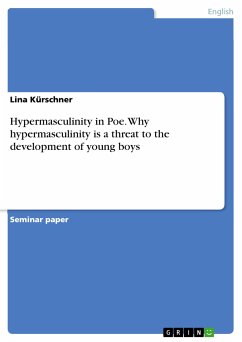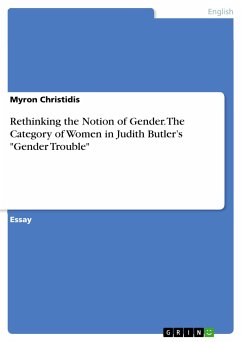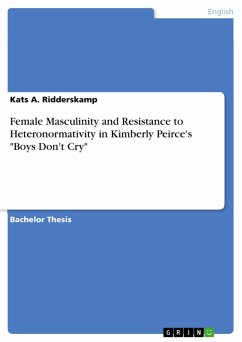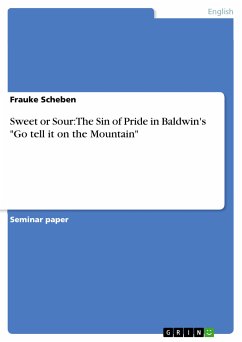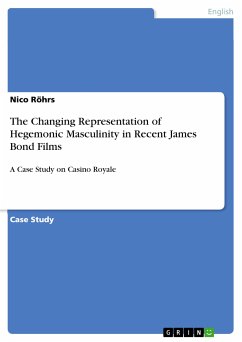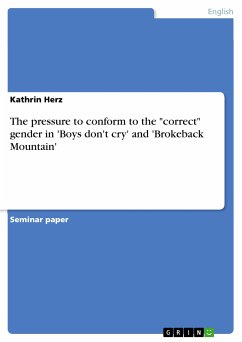
The pressure to conform to the "correct" gender in 'Boys don't cry' and 'Brokeback Mountain' (eBook, PDF)
Sofort per Download lieferbar
Statt: 17,95 €**
15,99 €
inkl. MwSt. und vom Verlag festgesetzt.
**Preis der gedruckten Ausgabe (Broschiertes Buch)
Alle Infos zum eBook verschenkenWeitere Ausgaben:

PAYBACK Punkte
0 °P sammeln!
Seminar paper from the year 2006 in the subject American Studies - Culture and Applied Geography, grade: 2,0, University of Heidelberg (Anglistisches Seminar), course: Cultural Studies: Gender Trouble in U.S.Films, language: English, abstract: Even nowadays people who do not fit in the commonly accepted sexual role models of our society still face severe problems and hostilities which frequently culminate in murder. This is illustrated in the movies Boys don't cry (1999) and Brokeback Mountain (2005). The two low-budged productions by the directors Kimberly Peirce and Ang Lee both tell love st...
Seminar paper from the year 2006 in the subject American Studies - Culture and Applied Geography, grade: 2,0, University of Heidelberg (Anglistisches Seminar), course: Cultural Studies: Gender Trouble in U.S.Films, language: English, abstract: Even nowadays people who do not fit in the commonly accepted sexual role models of our society still face severe problems and hostilities which frequently culminate in murder. This is illustrated in the movies Boys don't cry (1999) and Brokeback Mountain (2005). The two low-budged productions by the directors Kimberly Peirce and Ang Lee both tell love stories that are not blessed by society. The individuals suffer the pressure to conform to what is regarded as the "correct gender" in the respective societies. But what is meant by "correct gender"? "Gender", as García Landa defines it, is a "matter of language, of signs and symbols". It is a social construct and refers to the "cultural representation of sexual difference". In practice it can not be seen completely detached from biological sex as its definition is partly based on features as for example social behaviour and clothing commonly attributed to one certain sex. Also, sexual identity, which refers to the sexual orientation, is closely linked to gender because it is constructed on the basis of selfsame. The term "correct gender" refers to what society generally expects from a certain sex, in other words a person who biologically is a man should also conform to the male gender. As in all cultures individuals are socialized into a dominant heterosexual eroticism this includes having a heterosexual orientation. The aim of this paper is to analyze how the societies where the pressure originates from are built, how the characters cope with or try to escape from or strengthen the pressure to conform to the "correct gender", and which consequences this has. Also, on a structural level, the cinematographic means and techniques which the directors use will be analyzed in the course of the paper. When quoting from the film minutes will be stated in parenthesis after the quotation. The analysis in chapter 3.1. is taken from the audio commentary of director Kimberly Pierce which is included on the DVD Boys don't cry.
Dieser Download kann aus rechtlichen Gründen nur mit Rechnungsadresse in A, B, BG, CY, CZ, D, DK, EW, E, FIN, F, GR, HR, H, IRL, I, LT, L, LR, M, NL, PL, P, R, S, SLO, SK ausgeliefert werden.





